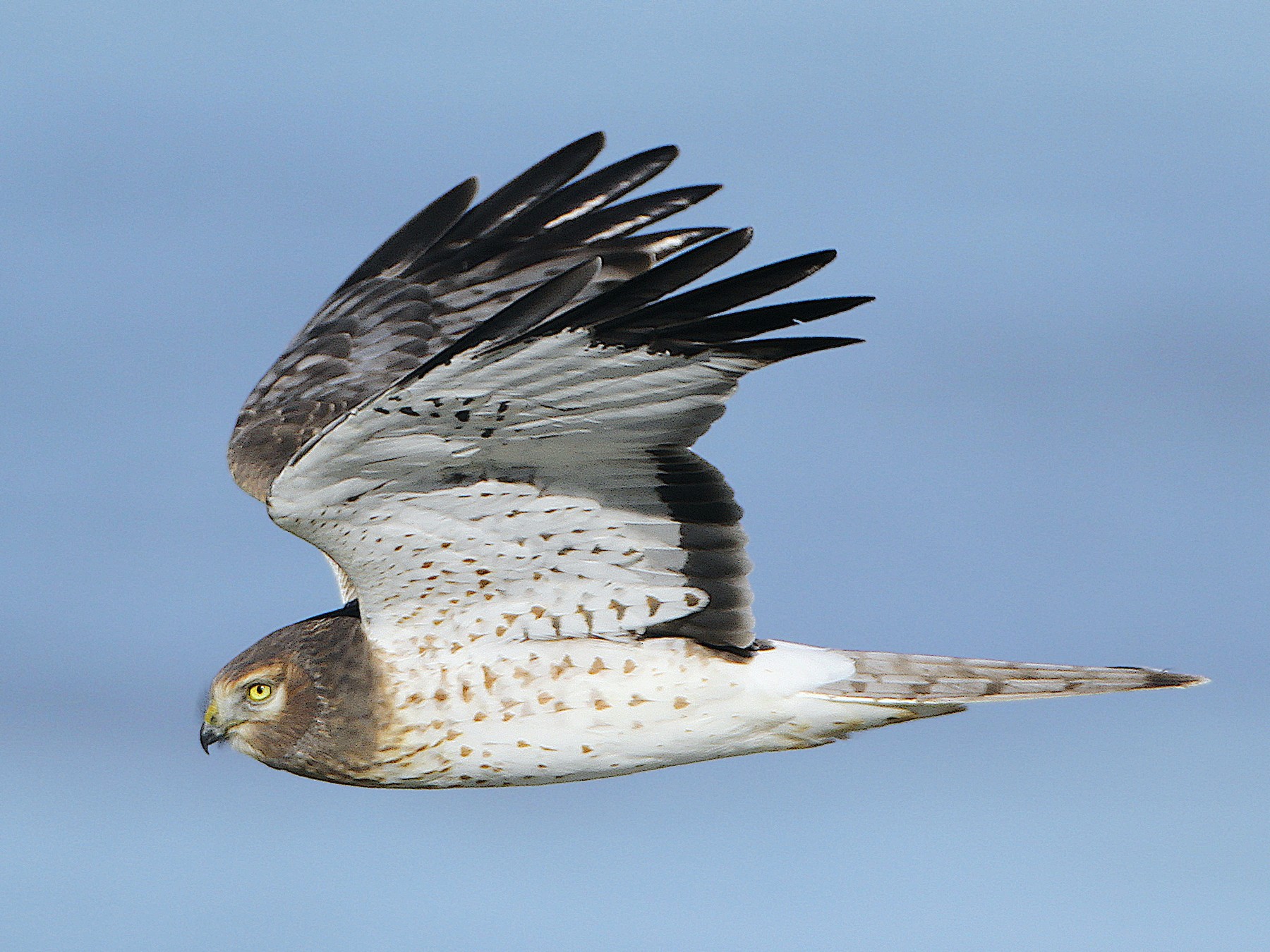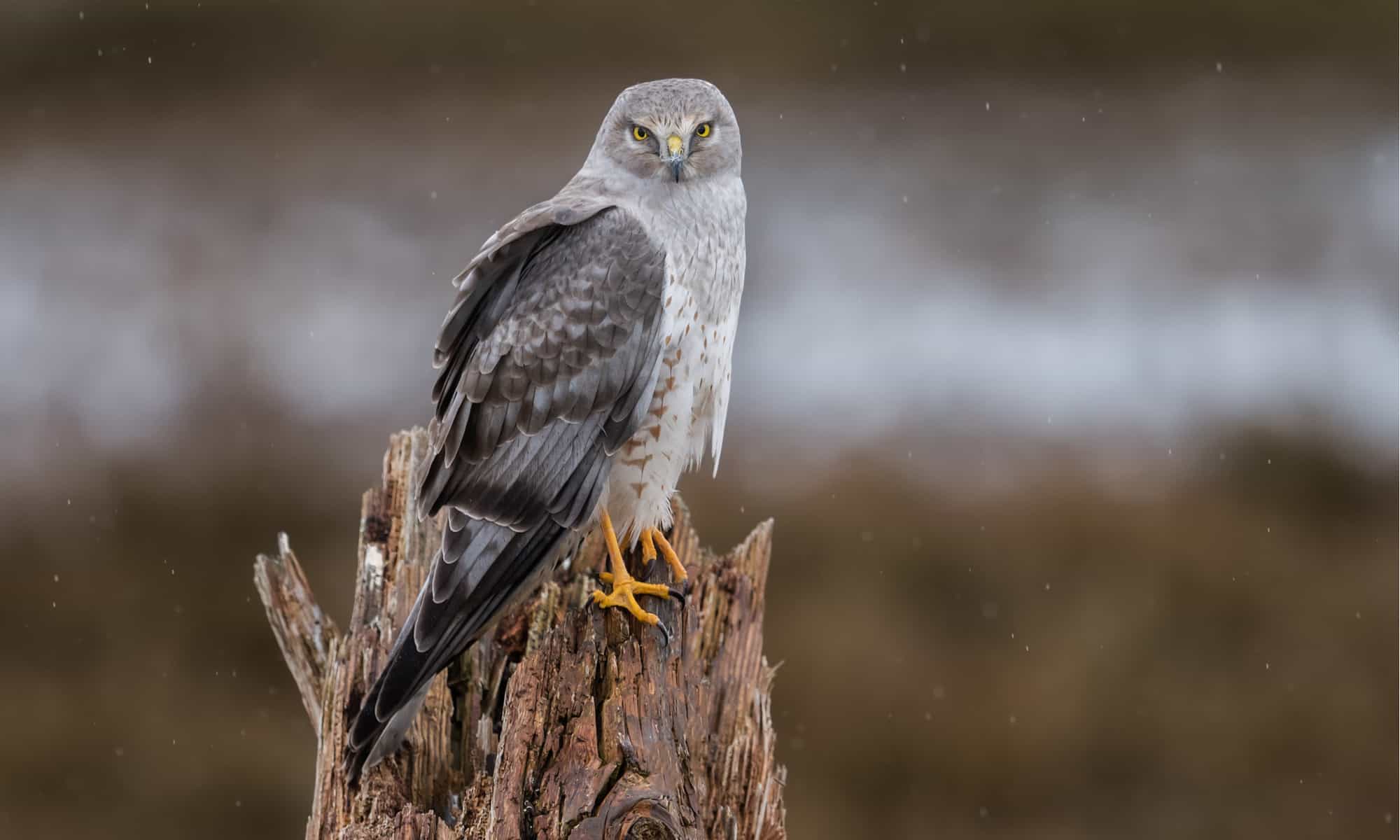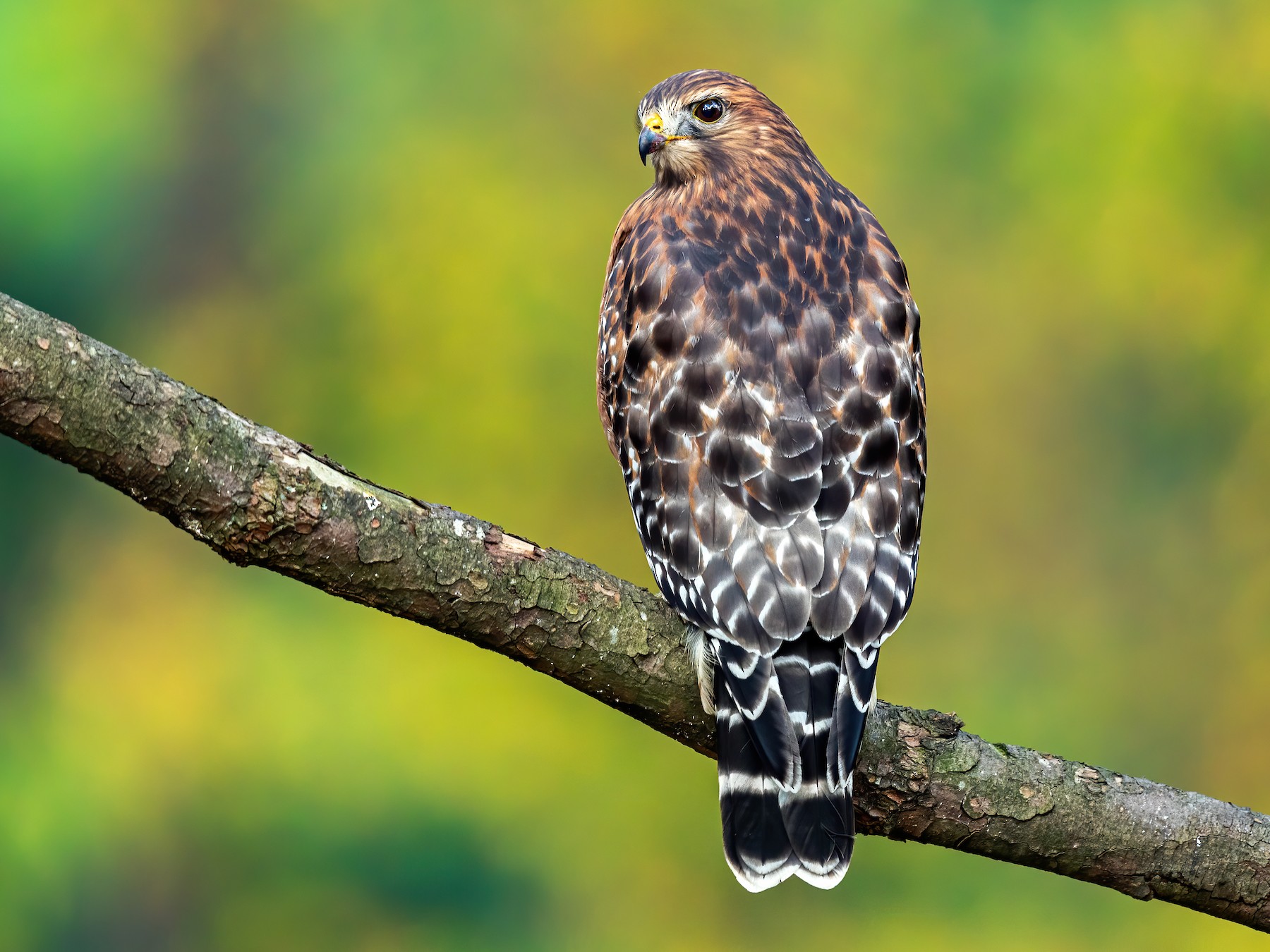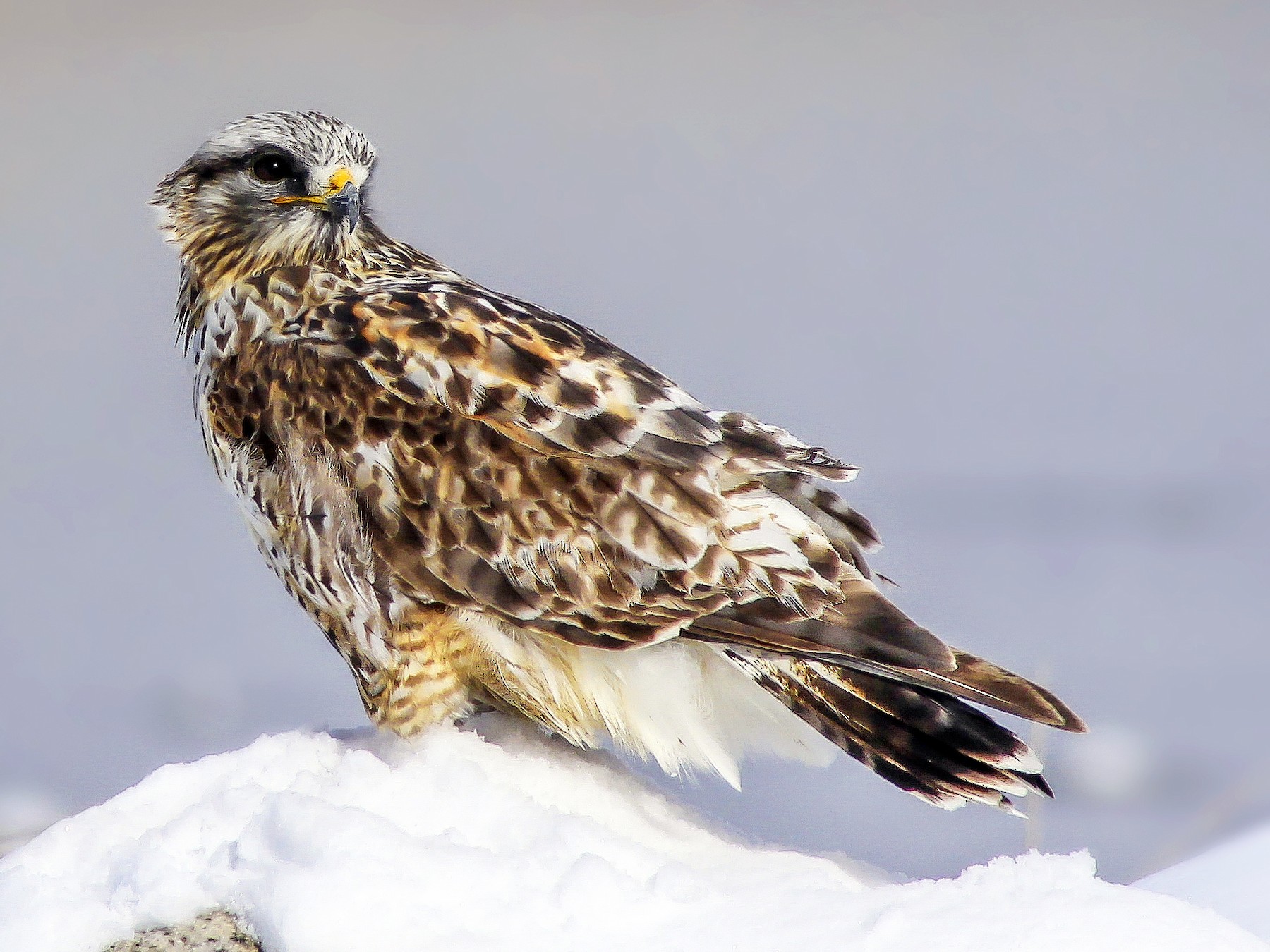North Carolina is home to a diverse range of wildlife, including several species of hawks. These majestic birds of prey are known for their keen eyesight, powerful talons, and impressive hunting skills.
In this article, we will explore the different types of hawks found in North Carolina. Whether you’re a birdwatcher, nature enthusiast, or simply curious about the wildlife in your area, this guide will provide you with valuable insights into the lives, behaviors, and significance of these fascinating birds. So, let’s dive in and discover the 8 types of hawks in North Carolina.
You are reading: Discover 8 Types Of Hawks In North Carolina

8 Types Of Hawks In North Carolina
Red-tailed Hawk
The Red-tailed Hawk is the most often-seen large hawk in North Carolina. These birds are known for their bulky and broad-winged bodies, designed for effortless soaring over open country, woodlands, prairie groves, mountains, plains, and roadsides. They are commonly seen perched on telephone poles along highways or soaring over open fields in search of prey.
Red-tailed Hawks are adaptable to nesting in cities and have been observed in several regions of North America. They build their nests, which are bulky bowls of sticks lined with finer materials, often with leafy green branches added, in mature woodlands, often extensive forests, woodlots, groves, and any kind of terrain that provides both some open ground for hunting and some high perches.
Red-tailed Hawks are fairly common residents throughout North Carolina, and their populations are stable or still increasing.
Northern Harrier

The Northern Harrier is a medium-sized hawk that is commonly found in North Carolina. It is the only regularly occurring hawk in the state that is strictly tied to marshes and fields, completely avoiding wooded areas.
Northern Harriers are slender, medium-sized raptors with long, fairly broad wings and a long, rounded tail. They have a flat, owl-like face and a small, sharply hooked bill.
Harriers often fly with wings held in a V-shape, low over open fields and marshes, listening for rodents lurking below. Though there are sporadic reports of them breeding in the state, Northern Harriers are a winter resident of North Carolina and are a relatively common sight.
Read more : Take A Look At These Beautiful Types Of Pheasants
A possible nest was noted on an island off coastal North Carolina in 1981. Prairie, meadow, and swamp are generally agreed to be the typical breeding habitats for Northern Harriers.
The conservation status of Northern Harriers is of concern, as they have disappeared from many former nesting areas, especially in southern parts of their range, and surveys suggest that they are still declining in parts of North America.
Red-shouldered Hawk

The Red-shouldered Hawk is a medium-sized buteo that is found throughout eastern North America and along the coast of California and northern to northeastern-central Mexico. Here are some key facts about the Red-shouldered Hawk in North Carolina:
– Habitat: Red-shouldered Hawks are forest raptors that live in bottomland hardwood stands, flooded deciduous swamps, and upland mixed deciduous-conifer forests. They tend to live in stands with an open subcanopy, which makes hunting easier. They are not exclusively birds of deep forest, though; one can find Red-shouldered Hawks in some suburban areas where houses or other buildings are mixed into woodlands.
– Appearance: Red-shouldered Hawks are medium-sized, with broad, rounded wings and medium-length tails that they fan out when soaring. They have brownish heads and backs, reddish breasts, rufous shoulder patches, and black and white flight feathers. Their tails are black with several narrow white bands. Juveniles are mostly brown from above and have cream-colored underparts with brown streaking.
– Behavior: Red-shouldered Hawks usually hunt by watching from a perch, either within forest or in open, swooping down when it locates prey. Sometimes they fly very low in open areas, taking creatures by surprise. They may use hearing as well as sight to locate prey. Red-shouldered Hawks are often heard before they are seen, as their clear whistled calls are conspicuous, especially in spring.
– Conservation status: The conservation status of Red-shouldered Hawks is of least concern, as their populations are stable or increasing in most areas. However, they are still vulnerable to habitat loss and degradation, especially in urban and suburban areas.
Red-shouldered Hawks are a common sight in North Carolina, and their distinctive calls and striking appearance make them a favorite among birdwatchers and nature enthusiasts alike.
Rough-legged Hawk

The Rough-legged Hawk, also known as the Rough-legged Buzzard, is a medium-large bird of prey found in Arctic and Subarctic regions of North America, Europe, and Russia during the breeding season and migrates south for the winter. Here are some key facts about the Rough-legged Hawk:
Appearance:
– Rough-legged Hawks are fairly large hawks with broad wings that are fairly long and narrow compared to other Buteo hawks.
– The tail is also longer than in many other buteos, and the wingtips are broad and often swept back slightly from the wrist, giving a hint of an M shape to the wing.
– The bill is fairly small, and the plumage is variable, ranging from lighter coloration to darker morphs and variations within each morph.
– Females are larger than males, and the adult female is readily distinguished from the adult male by her solid, dark bellyband.
Habitat and Behavior:
– Rough-legged Hawks breed mostly on tundra, in areas having cliffs for nest sites, and some breed along the northern edge of the coniferous forest zone.
– They spend the winter in open country, including grasslands, coastal prairies and marshes, farmland, and dunes.
– Rough-legged Hawks hunt from the air more than other buteos, hovering or “kiting” in place high above the ground and glancing back and forth in search of prey.
– They eat primarily voles and lemmings on their arctic breeding grounds, but will also supplement their diet with mice, rats, gerbils, pikas, shrews, squirrels, and insects.
Conservation Status:
– The conservation status of Rough-legged Hawks is of least concern, as their overall numbers are apparently healthy.
– Local populations in the Arctic go up and down, largely as a result of rodent populations there.
Rough-legged Hawks are a fascinating species of hawk that are well-adapted to life in cold climates. Their unique appearance and hunting behavior make them a favorite among birdwatchers and nature enthusiasts.
Broad-winged Hawk
The Broad-winged Hawk (Buteo platypterus) is a medium-sized hawk that is found in eastern North America, as far west as British Columbia and Texas, during the summer. Here are some key facts about the Broad-winged Hawk:
Appearance:
– Broad-winged Hawks are small, compact raptors with chunky bodies and large heads.
– They have relatively short and broad wings that come to a distinct point in flight.
– The tail is short and square, with bold black-and-white bands.
– Adults are solid brown above and barred reddish-brown below, while immatures have blotchier markings below and thin, diffuse tail bands.
Habitat and Behavior:
– Broad-winged Hawks are birds of the forest interior and can be hard to see during the nesting season.
– They hunt by watching for prey from a perch, usually located along the edge of woods or near water, and then swooping down rapidly to capture the creature in their talons.
– They occasionally hunt by flying through the woods or along watercourses, actively searching for prey.
– Broad-winged Hawks are most easily seen during migration at hawkwatches, where they form sometimes enormous aerial flocks, especially in southern Texas, in Mexico along the Gulf coast in Veracruz, and along the shores of the Great Lakes.
Conservation Status:
– The conservation status of Broad-winged Hawks is of least concern, as their numbers seem healthy.
– Early in the 20th century, large numbers were sometimes shot during migration, but with legal protection, their populations have recovered.
Broad-winged Hawks are a fascinating species of hawk that are well-adapted to life in forested areas. Their unique appearance and hunting behavior make them a favorite among birdwatchers and nature enthusiasts.
Sharp-shinned Hawk
Read more : Types Of Cardinal Birds With Pictures
The Sharp-shinned Hawk (Accipiter striatus) is a small hawk that is found in North, Central, and South America. Here are some key facts about the Sharp-shinned Hawk:
Appearance:
– Sharp-shinned Hawks are small, long-tailed hawks with short, rounded wings.
– They have small heads that in flight do not always project beyond the “wrists” of the wings.
– The tail tends to be square-tipped and may show a notch at the tip.
– Females are considerably larger than males, with males being the smallest hawks in the United States and Canada.
Habitat and Behavior:
– Sharp-shinned Hawks are agile fliers that speed through dense woods to surprise their prey, typically songbirds.
– They hunt by perching inside foliage and waiting for small birds to approach, or by approaching stealthily through dense cover, then bursting forth with incredibly swift flight to capture prey in their talons.
– Sometimes they hunt by flying rapidly among the trees or low over the ground, threading their way around obstacles, taking prey by sudden surprise.
– Sharp-shinned Hawks are most easily observed during migration, when they are more likely to be seen in open areas.
Conservation Status:
– The conservation status of Sharp-shinned Hawks is of least concern, as their populations are stable or increasing in most areas.
– They are protected under the Migratory Bird Treaty Act.
Sharp-shinned Hawks are a fascinating species of hawk that are well-adapted to life in dense forests. Their unique appearance and hunting behavior make them a favorite among birdwatchers and nature enthusiasts.
Northern Goshawk
The Northern Goshawk (Accipiter gentilis) is a large hawk that is found in North America and Eurasia. Here are some key facts about the Northern Goshawk:
Appearance:
– Northern Goshawks are the largest and bulkiest of the accipiters, with broad, rounded wings and long tails.
– They have relatively long secondary flight feathers that give the trailing edge of the wing a somewhat pinched appearance.
– Adults are overall gray, paler below, with a blackish crown and cheek, white eyebrow, and red eye.
– Immatures are similar to Eurasian Sparrowhawks and Cooper’s Hawks, but larger and broader-winged with a more prominent white eyebrow, heavier streaking below, and typically streaked undertail coverts.
Habitat and Behavior:
– Northern Goshawks are secretive birds that typically live in large tracts of forest, so they are hard to find.
– They are vocal near their nests, but they are also fiercely defensive and have been known to attack people who come too close to a nest.
– Northern Goshawks are powerful predators that hunt inside the forest or along its edge, taking their prey by putting on short bursts of speed and agility.
– They feed on large prey such as hares and grouse.
Conservation Status:
– The conservation status of Northern Goshawks is of least concern, as their populations are stable or increasing in most areas.
– They are considered “management indicators” in many national forests and are sensitive to change, so their well-being often can indicate the health of the forest ecosystem.
Northern Goshawks are a fascinating species of hawk that are well-adapted to life in large tracts of forest. Their unique appearance and hunting behavior make them a favorite among birdwatchers and nature enthusiasts.
Swainson’s Hawk
Swainson’s Hawk (Buteo swainsoni) is a large bird species in the Accipitriformes order. Here are some key facts about the Swainson’s Hawk:
Appearance:
– Swainson’s Hawks are buteos, meaning they are large hawks with fairly broad wings and short tails.
– They are slimmer and longer-winged than many other buteos, with their wings typically held in a shallow V when soaring.
– They are larger than a Cooper’s Hawk but smaller than a Ferruginous Hawk.
– They are 43–56 cm (17–22 in) long and weigh 0.5–1.7 kg (1.1–3.7 lb).
Habitat and Behavior:
– Swainson’s Hawks are found in open country west of the Mississippi River during summer.
– They perch conspicuously on utility poles, fence posts, and isolated trees in areas that otherwise lack such elevated perches.
– They stand on the ground in grassland or tilled agricultural fields in perch-deprived areas.
– They are very fond of Acrididae (locusts and grasshoppers) and will voraciously eat these insects whenever they are available.
– They feed their chicks the usual “three r’s”: rodents, reptiles, and rabbits.
Conservation Status:
– The conservation status of Swainson’s Hawks is of least concern, as their populations are stable or increasing in most areas.
– They have declined seriously in much of their nesting range, especially in California, but the causes of decline are not well understood.
Swainson’s Hawks are a fascinating species of hawk that are well-adapted to life in open country. Their unique appearance and hunting behavior make them a favorite among birdwatchers and nature enthusiasts.
FAQS
1. How many types of hawks are found in North Carolina?
There are 6 to 8 species of hawks found in North Carolina, depending on the source. The most commonly cited species are the Red-tailed Hawk, Northern Harrier, Red-shouldered Hawk, Rough-legged Hawk, Broad-winged Hawk, Sharp-shinned Hawk, Northern Goshawk, and Swainson’s Hawk.
2. What habitats do hawks in North Carolina prefer?
The different species of hawks in North Carolina prefer different habitats. For example, Red-shouldered Hawks are forest raptors that live in bottomland hardwood stands, flooded deciduous swamps, and upland mixed deciduous-conifer forests, while Northern Harriers are strictly tied to marshes and fields, completely avoiding wooded areas.
3. What do hawks in North Carolina eat?
Hawks in North Carolina eat a variety of prey, depending on the species. For example, Swainson’s Hawks are very fond of Acrididae (locusts and grasshoppers) and will voraciously eat these insects whenever they are available, while Red-shouldered Hawks feed their chicks the usual “three r’s”: rodents, reptiles, and rabbits.
4. Are hawks in North Carolina endangered?
Most species of hawks in North Carolina are not endangered and have stable or increasing populations. However, some species, such as the Northern Harrier, have disappeared from many former nesting areas and are still declining in parts of North America.
5. Where can I see hawks in North Carolina?
Hawks in North Carolina can be seen in a variety of habitats, including forests, fields, marshes, and along highways. Some species, such as the Broad-winged Hawk, are most easily observed during migration at hawkwatches, where they form sometimes enormous aerial flocks.
Source: https://petstutorial.com
Category: Birds










